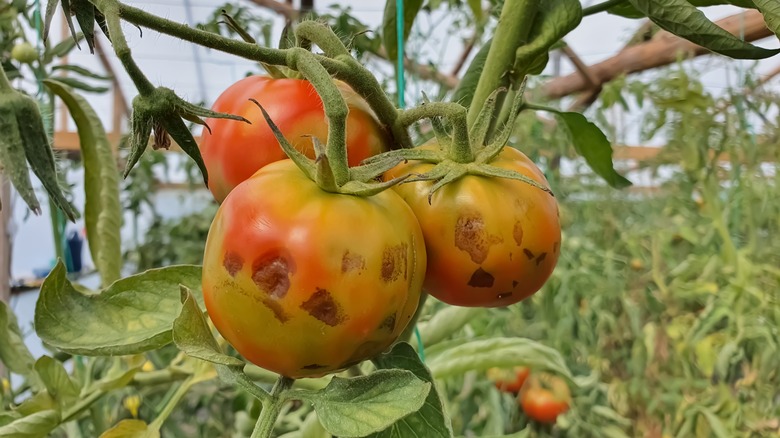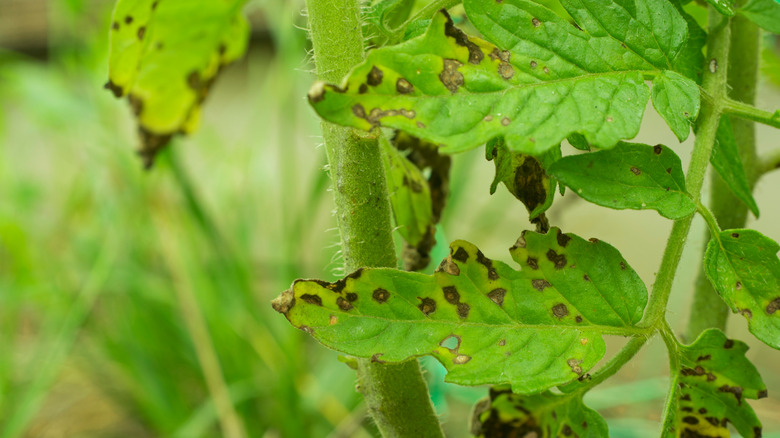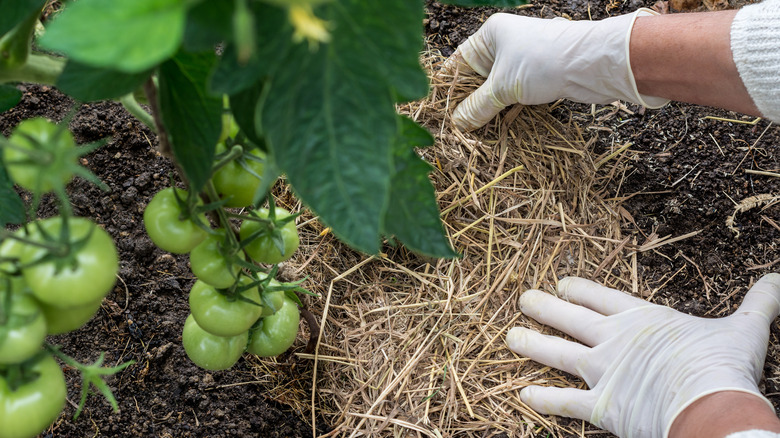How To Stop Tomato Blight In Its Tracks
Tomato plants are staples to any home vegetable garden. While typically fun and easy to grow, these plants and their produce often fall victim to blight, a fast-spreading disease caused by multiple different fungi. This disease can quickly ruin an entire tomato plant. However, if identified and treated early, this common problem can be promptly nipped in the bud by utilizing fungicides and removing the impacted areas.
There are three different types of blight that are detrimental to tomato plants: Early blight, late blight, and septoria leaf spots. Early blight is caused by Alternaria solani, late blight is the result of Phytophthora infestans, and septoria leaf spot is caused by Septoria lycopersici.
Fortunately, each subtype is visible, making it treatable if caught early on. In most cases, after identifying the subtype of blight on a plant, gardeners are able to successfully stop it by removing affected leaves and fruits, re-mulching, and applying fungicide.
How to identify blight
The three subtypes of tomato blight act and impact tomato plants individually and occur at different stages of the plant's growth. Early identification is important for treating the problem.
Early blight shows itself in the form of brown lesions on the bottom leaves that eventually grow into target-like rings. The disease travels up the plant, killing its leaves and tissue but never directly attacking the tomatoes. This subtype typically attacks plants shortly after fruits appear.
Late blight can occur at any point in a plant's lifecycle and begins on the leaves' edges as dark tissue gradually reaches the stem of the plant. It can appear white on leaves in some cases and can reach the fruits themselves if not handled in a timely manner.
Septoria leaf spot acts and appears similar to early blight but is differentiated because this blight produces much smaller brown leaf lesions. Like early blight, it begins at the bottom of the plant, shows itself after fruits have grown, and doesn't typically spread to the tomatoes themselves.
Stopping blight directly
If the blight has progressed beyond repair, you may need to remove your tomato plant completely, re-mulch the area, and start over with a fresh plant. But, if you catch it early enough, start by removing the portions of blight-diseased vegetation immediately after discovering them. Do this by either burning or throwing the clippings in the garbage (do not place them in vegetative collection cans).
Once there are no visible symptoms of blight, begin re-mulching around your tomato garden. Blight begins at the bottom of the plant, making this the most important and thorough way to prevent further blight occurrences. Use natural mulch and straw to help control the temperature and moisture levels of the formerly infected plant. If necessary, utilize the help of plant fungicides that target blight specifically and can be found at your local hardware store. After tending to the area, continue monitoring your plant to ensure you catch and control any returning blight quickly.


